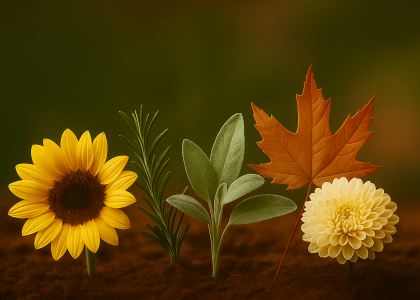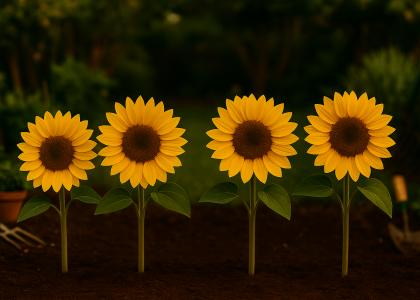"Plant Rue when you seek clarity. Prune it when you're ready to let go."
Rue (Ruta graveolens) isn't just a forgotten herb tucked away in medieval folklore—it's making a quiet but powerful comeback in modern wellness gardens, sensory landscapes, and spiritual design. With silvery blue foliage, delicate yellow blooms, and a scent that's both grounding and protective, Rue is the unsung hero of the herb world.
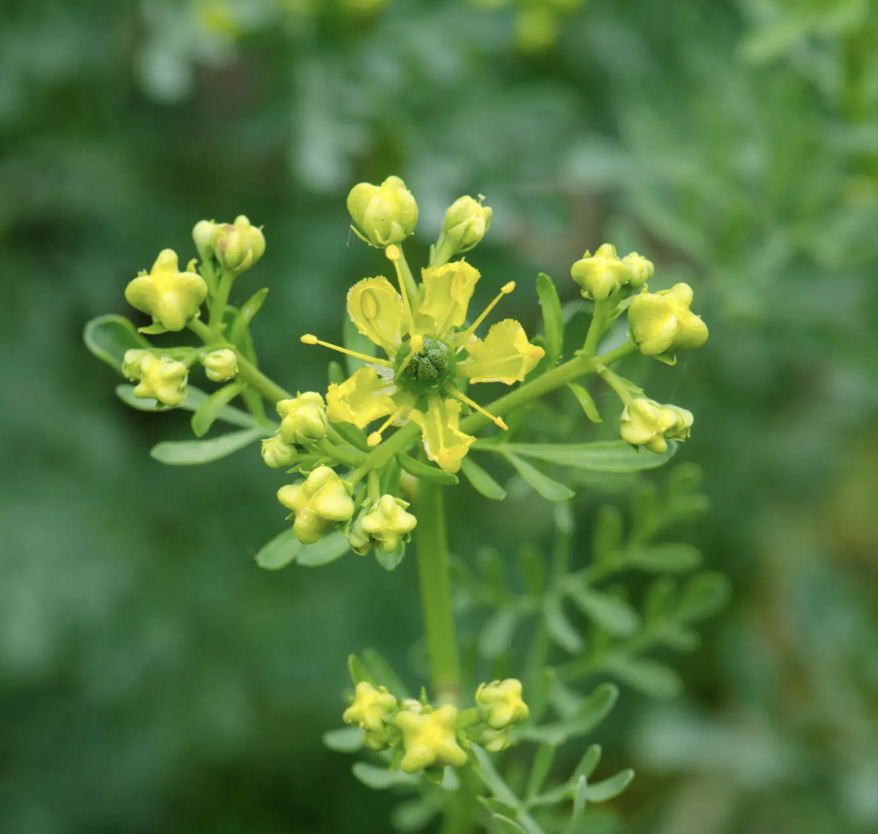
What Makes Rue Special Today?
In an era where gardening meets wellness, Rue offers more than beauty:
- Healing Gardens: Rue is deeply rooted in symbolism—protection, clarity, and emotional release.
- Sensory Appeal: Its unique aroma and soft foliage stimulate touch and smell in therapeutic gardens.
- Witchy & Apothecary Aesthetic: Rue is a must-have in moon gardens, herbalist spaces, and mystical garden corners.
- Low-Water Landscaping: With climate consciousness rising, Rue’s drought tolerance shines in eco-design.
Rue bridges the past and the present—from sacred herb to sensory design element.
Quick Facts
| Category | Details |
|---|---|
| Botanical Name | Ruta graveolens |
| Common Names | Rue, Herb-of-Grace, Garden Rue |
| Type | Perennial herb |
| Hardiness Zone | USDA 4–9 |
| Sun Requirements | Full sun to light shade |
| Soil | Sandy, well-drained |
| Height/Spread | 18–24" tall / 12–18" wide |
| Flowering | Late spring to midsummer |
Why Rue Deserves a Spot in Your Garden
✅ Aesthetic Texture
Rue's fern-like, blue-green leaves add elegant contrast to silver foliage or vibrant bloomers like lavender or yarrow.
✅ Protection & Symbolism
From shielding against pests to spiritual energy, Rue is historically known as a guardian plant.
✅ Natural Pest Repellent
Its strong scent repels:
- Aphids
- Cabbage moths
- Japanese beetles
- Cats
✅ Minimal Maintenance
Once established, Rue requires:
- Minimal water
- Occasional pruning
- Good sun exposure
Note: Rue can cause skin irritation in sun—wear gloves when handling.
How to Grow & Care for Rue
Soil & Sun
- Loves well-drained, alkaline soil
- Prefers full sun, tolerates partial shade
Watering
- Deep water occasionally once roots establish
- Avoid soggy conditions
Pruning
- Prune after blooming to maintain shape
- Cut above nodes to encourage bushy growth
Propagation: Rue on Repeat
- From Seed: Sow in early spring. Germination in 14–30 days.
- From Cuttings: Take softwood cuttings in late spring.
- By Division: Rare but possible with mature, woody plants.
Is Rue Safe to Use?
| Use Case | Caution Level |
| Culinary Use | ❌ Not recommended—can be toxic |
| Medicinal Tea | ⚠️ Under professional guidance only |
| Skin Contact | ⚠️ May cause irritation in sunlight |
Rue is best appreciated for its garden value, symbolism, and spiritual uses, rather than for consumption.
Rue in Rituals, Lore & Energy Gardens
- Considered a purifying herb in Mediterranean and Christian traditions
- Often included in spiritual protection bundles or smudge sticks
- Symbol of repentance, release, and renewal
Try this: Create a Rue & Lavender herbal sachet for emotional clarity or place dried Rue at entryways to "guard" your home.
Design Tip: Companion Plants That Shine with Rue
| Best Companions | Avoid Pairing With |
| Roses | Mint |
| Lavender | Cabbage family |
| Sage | Basil |
| Strawberries | – |
| Yarrow | – |
Combine Rue with silvery lamb's ear or catmint for a blue-toned border that repels pests and radiates calm.
Inspiration: Rue Garden Scenes You’ll Love
- Rue in Moon Gardens: Pair with white dianthus, silver artemisia, and pale lavender.
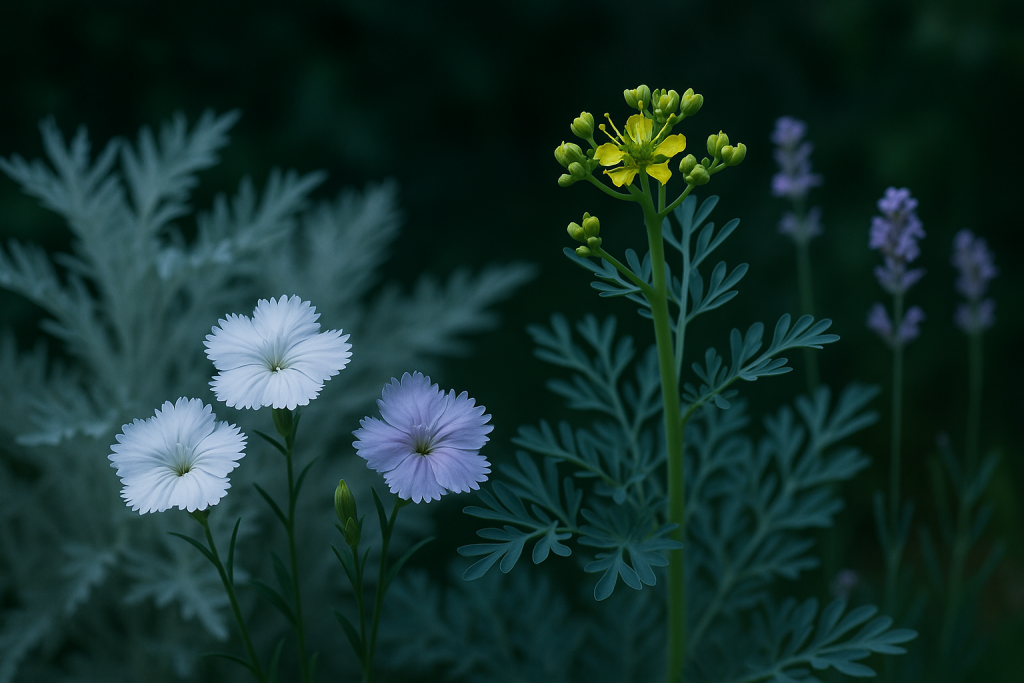
- Witch’s Herb Corner: Rue + Mugwort + Hyssop + Rosemary = ancient wisdom vibe
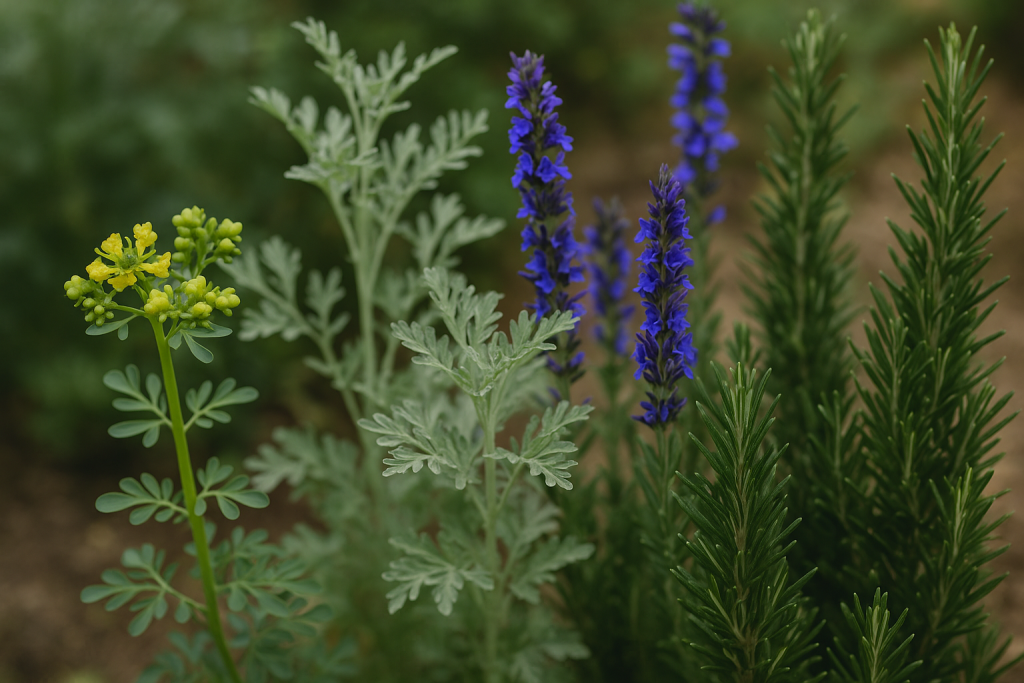
- Balcony Healing Bundle: Small pot of Rue with lavender + thyme = wellness on your windowsill

Final Thoughts
Rue isn’t about instant gratification—it’s about intention. It asks for patience, offers clarity, and gives more than it takes. Whether you’re planting it to ward off pests, to create a sacred space, or simply to admire its quiet strength, Rue will reward you with more than beauty.
In a garden full of voices, Rue is the quiet protector.


